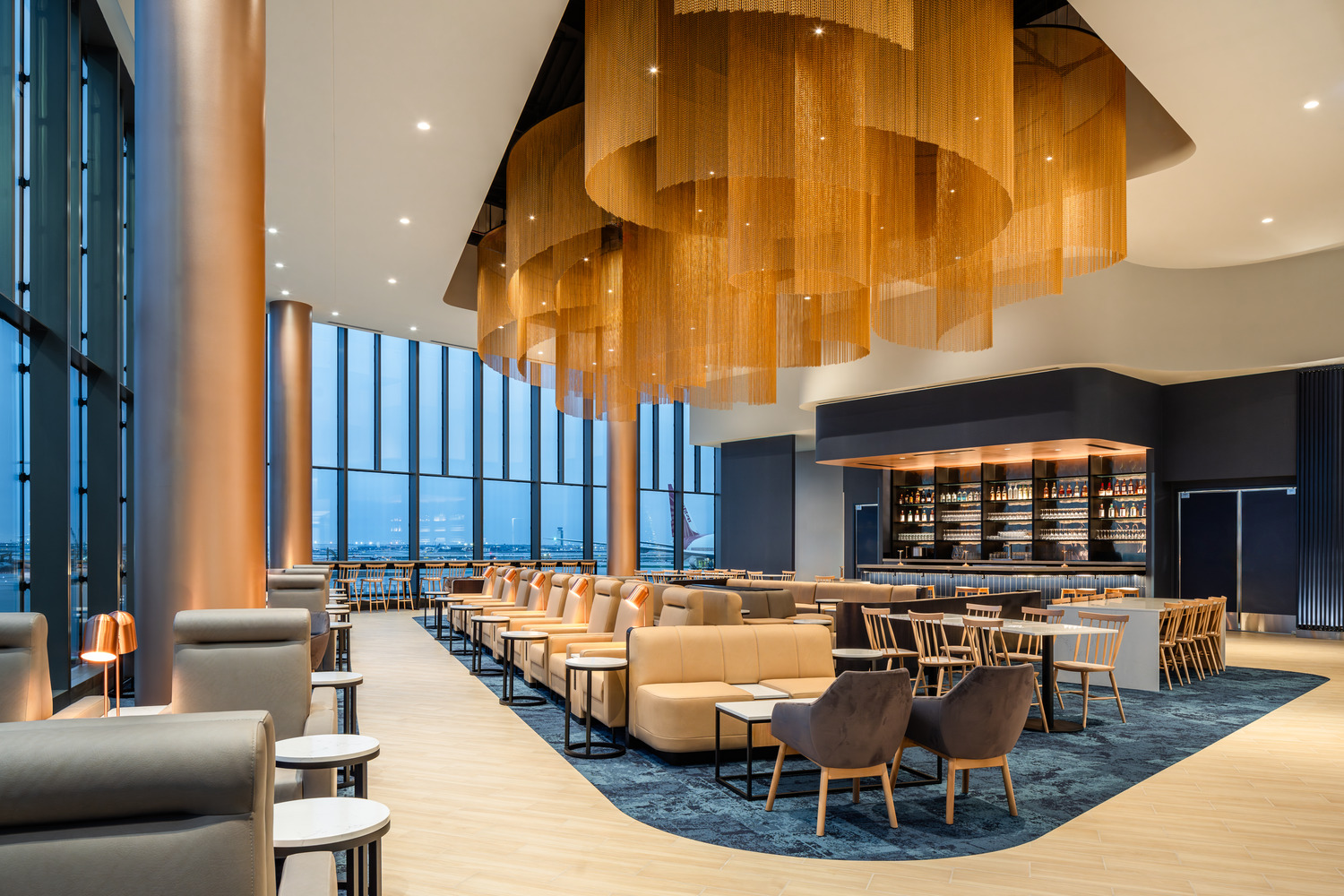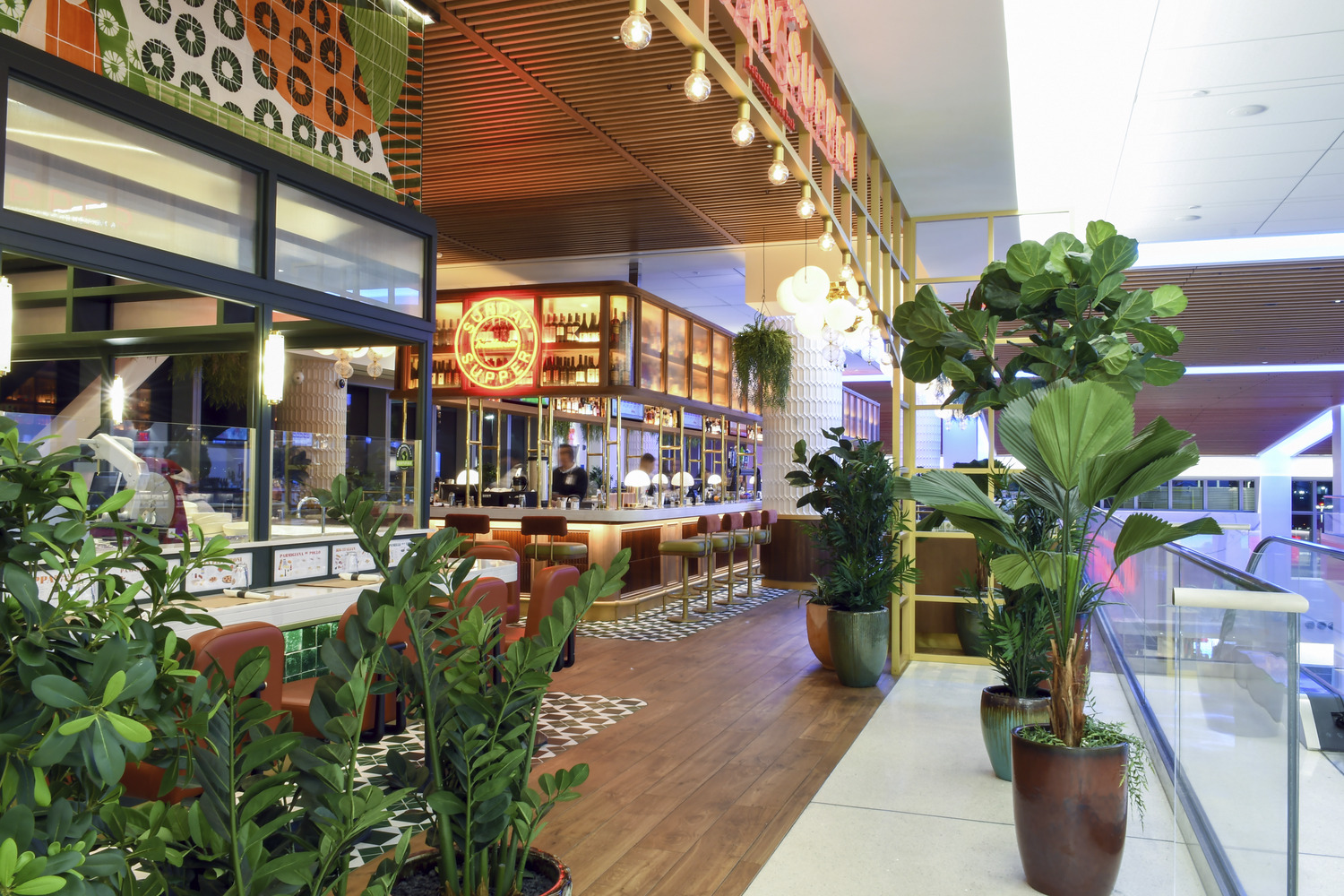


16 November 2023


Transforming airports from a passenger’s ordeal to enjoyable travel experiences
For years, the standard recommendation for major airlines has been clear – arrive at the airport at least two-hours before your flight’s departure to ensure enough time to get through check-in and TSA security. This often leaves passengers with more time to kill at the airport than they would prefer.
To overcome the long-standing reputation of airports being a place a traveler must simply endure to get to their destination, a trend of transforming airports into attractive destinations in their own regard has emerged.
“Airports are definitely in a competition to enhance the passenger experience,” said Chris Redpath, Managing Director in Clune’s Chicago office, and the Project Executive overseeing airport terminal construction projects in the region. “Because travelers arrive at the airport so early before their flights, they are a captive audience to a terminal’s amenities during that time.”
An exciting trend that is helping in this effort is the integration of well-known restaurants from the airport’s home city into the terminal itself. This creates an experience that mirrors what is found on the city streets, bringing a touch of local flavor and culture to the airport.
One of the most notable examples of this is New York City’s LaGuardia Airport. After years of enduring a reputation for its outdated, cramped, and dingy concourses, an aggressive plan to remake it into a modern and welcoming space began in 2016. In 2021, Delta Airlines began their renovations, starting with the transformation of Terminal C. The renovation of Terminal D is currently ongoing. Clune is the general contractor for the amenities portion of both projects.
For its terminal renovations at LaGuardia, Delta partnered with OTG, renowned for transforming airport terminals into inviting destinations with comfortable seating, world-class amenities, and high-quality restaurants.
“The lounges and restaurants at LaGuardia are all very high end,” said Teddy Kalaboukas, Clune Senior Project Manager, for the project. “The idea was to bring in some popular local restaurants, so it’s as if they were bringing the streets of New York into the terminal.”
Building a Destination
With airports across the country looking to do similar transformations, the need to bring on a general contractor with experience performing high-end installations is essential.
Clune Construction has been building out hospitality and amenity portions of airport terminals for over a decade, getting their start building United’s T2 Club in Terminal 2 of Chicago’s O’Hare International Airport.
Not long after, Clune’s team in Los Angeles was awarded their first airport concessions project, Klatch Coffee, in Terminal 7 of Los Angeles International Airport (LAX).
In all cases, Clune’s experience in managing high-end installations, ability to adhere to demanding schedules and strong partnerships with top-tier subcontractors has made us uniquely qualified to manage projects of this nature. Our extensive background in executing high-end installations for our corporate interior clients, we bring unique perspective to the transformation of the country’s airport terminals into upscale hospitality and retail spaces.
“Our extensive track record in constructing upscale corporate interiors has been a key factor in our success in building out airport terminals,” explained Randy Starbird, President of Clune’s Western Region. “We thrive on demanding timelines because that’s our everyday approach to construction.”
No Time to Waste
The emphasis on timelines is crucial. When an airline determines an opening date, there is minimal flexibility to negotiate it.
“When a terminal is opening, all concessions must be fully operational and ready for business,” said Kalaboukas “It’s like a retail establishment. The store must open on time to start being profitable. Pushing back the opening date is not an option.”
A crucial factor in ensuring airport amenities are completed in time for a terminal opening is a strong partnership between the general contractor and the project’s subcontractors. In all Clune’s regions, we have built strong partnerships with top-tier subcontractors. Their experience in handling high-end tenant improvement projects has made them accustomed to the demanding timelines in building out the amenities in an airport terminal.
Strong Partnerships Bring Fresh Perspective
In addition, these subcontractors bring extensive experience working with premium material finishes including millwork, metal, glass, tile, and custom signage. Many of these trade partners have been hesitant about working in the airport construction sector. However, due to Clune’s strong relationships with these skilled partners, we have been successful in bringing these vendors onto our airport projects. This expertise is instrumental in ensuring the quality, durability and aesthetics necessary to transform an airport terminal’s amenities.
“By leveraging these relationships, we bring a unique perspective to these projects and introduce an innovative approach to airport buildouts,” says Starbird.
Elevating Aesthetics and Durability
Because airlines are looking to improve the experience of waiting in an airport terminal, the overall aesthetic of the space has improved as well. Terminals are gravitating away from simple white drywall towards more elevated materials.
For example, LaGuardia’s Terminal C now boasts high ceilings, custom architectural metals, millwork, marble accents, Spanish stonework, and ceramic tile.
“Every single wall or ceiling area has a finish on it. It’s covered in wood, glass, metal, or tile and it all meets at a certain point,” said Kalaboukas. “Everything is so intricate and detailed that you need those professionals who have the experience to do that kind of work.”
Durable, high-end materials are an essential protection against the typical wear and tear experience at the hands of hurried travelers.
“You have walls constantly getting knocked by luggage, so the finishes need to be durable,” said Redpath. “This isn’t a simple matter of drywall or paint, so you need to find qualified specialty trades to do the installation.”
Navigating Flexibility
A project team building out an airport amenity space must also have the ability to work around an airport’s many restrictions, which effect a project’s schedule and budget.
For example, Clune is currently building the Delta One Lounge at LAX. The space shares a wall with the area where airline pilots sleep in between flights. As a result, the project team must work around restrictions that are more stringent than most tenant interior work.
“It’s not uncommon that a team will have to jump around and only be able to work in an area for two-hours and then will have to leave and return later for another two-hours of work,” explained Starbird, adding that restrictions such as this also impact when subcontractors can move materials to a jobsite location, which require a great deal of coordination. Daytime and nighttime work is also often required.
Clune emphasizes the importance of collaboration and the ability to pivot when necessary. It’s crucial to adapt, coordinate, and work together when challenges arise.
Flying Into the Future
The paradigm shift towards transforming airport terminals into high-end hospitality and retail spaces not only makes them more attractive destinations, but enriches the passenger experience. As more airports across the US embark on similar transformations, Clune’s experience and innovative approach are poised to play a key role in reshaping the future of airport travel.
“Airport clients want a general contractor that is highly experienced in this sector,” said Redpath. “We’ve built a great story over the years, and we’re expanding our portfolio across the country as well.”